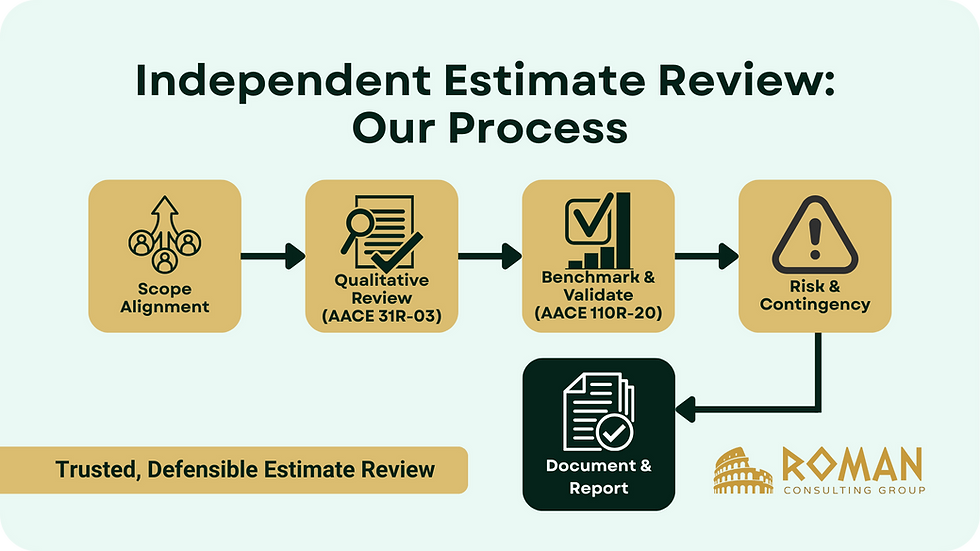Independent Estimate Reviews: How to Validate Costs and Improve Estimate Accuracy
- Roger Farish

- Aug 24, 2025
- 2 min read
Updated: Dec 1, 2025
Bringing Structure, Objectivity, and Confidence to Capital Project Estimates | ROMAN Consulting Group
Even strong estimating teams can miss critical details in early project phases.
Assumptions get overlooked, escalation rates are misapplied, contingencies are stretched too thin, and scope boundaries can blur. These gaps do more than distort the numbers; they influence investment decisions, funding approvals, and negotiations that define project success.
That is why many owners, EPCs, and OEMs rely on independent estimate reviews to validate costs and improve accuracy. A structured review builds confidence, transparency, and alignment across stakeholders. According to AACE International Recommended Practice (RP) 31R-03, reviews assess estimate quality, suitability, and alignment with project objectives. A well-defined Basis of Estimate (BoE) is essential for this process.

A proper review goes beyond checking math. It verifies methodology, confirms estimate class, assesses scope and exclusions, and benchmarks costs against market norms. In many cases, preparing a Should-Cost Estimate provides a valuable baseline for comparison and negotiation.
Independent reviews reduce bias, validate contingency logic, and strengthen owner confidence. As discussed in Top 5 Estimating Mistakes in Capital Projects, early reviews often uncover issues before they reach approval gates.
The result is an estimate that is not only technically sound but also credible and defensible. It supports better decisions and stronger negotiations.
At ROMAN Consulting Group, we help owners, developers, EPCs, and OEMs strengthen estimate credibility through independent estimate reviews that assess methodology, scope coverage, contingency logic, and cost competitiveness. Our structured approach, grounded in AACE practices and supported by market data and ACCE tools, gives decision makers transparent and defensible insight before major capital is committed.
Related Articles





Comments